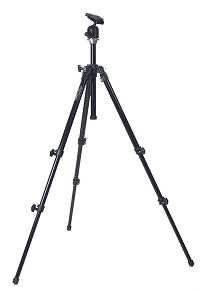There is some contradiction in using an iPhone with a tripod. The iPhone is with you all the time and slips into your pocket comfortably. But even the smallest tripods won’t fit in a pocket.
Perhaps the biggest advantage of the iPhone, as a camera, is that you have it with you all the time. A friend and photographer once told me that great photographers often have one thing in common – they are always carrying a camera. Taking a tripod is a decision to “go photographing” and that does not always coincide with the right moment.
There are some tripods designed specifically for mobile phones. These are small and require placing the tripod on a support, such as a table or railing. They are a good compromise if you need a portable tripod. I think they are still not small enough to be carried all the time.
HiLO Lens is designed to be with you all the time. It is small enough to hang from a keychain, slip in a pocket or hide in handbag. This means you are always ready for action.
After slipping HiLO Lens onto your iPhone, lay it down with the screen facing up. The camera will be redirected along the horizon. If you place the iPhone at the edge of a table/chair/railing/anything, we have an effective tripod.
HiLO Lens adds some thickness to the camera end of the iPhone, so the iPhone will be at a slightly inclined angle. This would result in a rotation of the image. But the HiLO Lens App detects the inclination of the iPhone, then automatically rotates the image to correct for this**.
The HiLO Lens app also provides a delayed trigger for the camera, giving you time to strike a pose and avoid camera shake when the screen is tapped.
With HiLO Lens you no longer need to be embarrassed when carrying a tripod in your pocket.
**For those of you who love the nitty gritty details : when rotating an image we typically need to crop it to get a rectangular image. HiLO Lens uses optics to maintain the field of view of the iPhone within a smaller area of the iPhone’s image sensor. This means we can rotate the image and crop it while keeping the standard field of view. There is a compromise because by using a smaller area of the camera sensor we loose a little bit of resolution, but given the high pixel count of the iPhone 4 we think this is OK.

